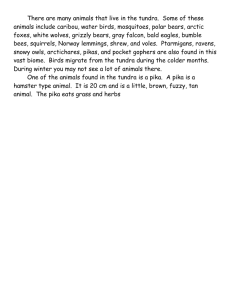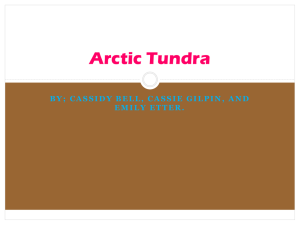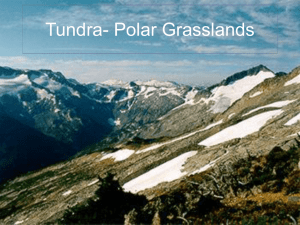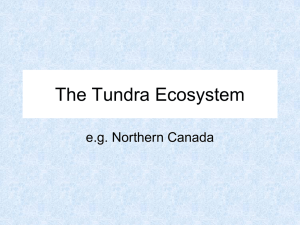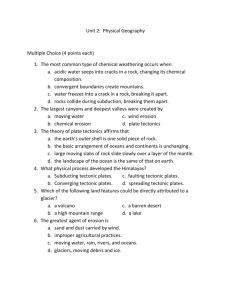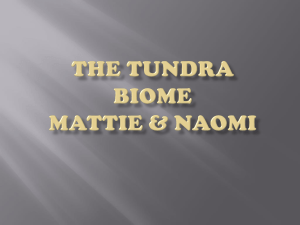Tundra vegetation: (aka: producers)
advertisement
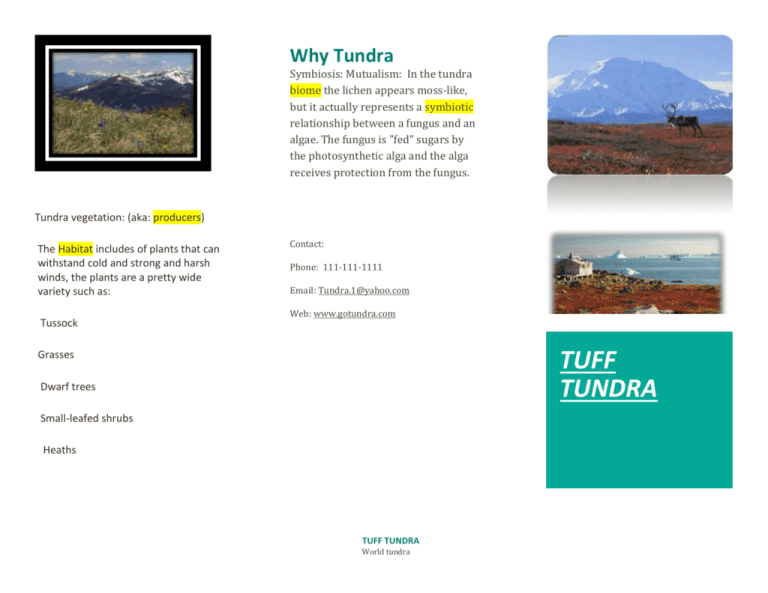
Why Tundra Symbiosis: Mutualism: In the tundra biome the lichen appears moss-like, but it actually represents a symbiotic relationship between a fungus and an algae. The fungus is "fed" sugars by the photosynthetic alga and the alga receives protection from the fungus. Tundra vegetation: (aka: producers) The Habitat includes of plants that can withstand cold and strong and harsh winds, the plants are a pretty wide variety such as: Tussock Contact: Phone: 111-111-1111 Email: Tundra.1@yahoo.com Web: www.gotundra.com TUFF TUNDRA Grasses Dwarf trees Small-leafed shrubs Heaths TUFF TUNDRA World tundra The Climate: The climate is cold, long winters and lots of snow. The short summer lasts only 6 to 10 weeks. It never gets any warmer than 45 or 50° F. The warmer weather causes a layer of permafrost, ice that never goes away in the ground, to melt, creating bogs and shallow lakes that don't drain. Tundra Facts: Food Web Adaptions: The ermines adapt to the harsh tundra by digging holes and stuffing it with grass and food they sleep to conserve energy. They are also scavengers if they need to be. The artic fox hunts well in the snow because he is a carnivore, by making noises at the top to get the prey hiding under the snow to come out and he pounces on them. The tundra few: Polar Bear Snowy Owl Artic Fox Musk Ox Artic Hare Rock Ptarmigan Caribou Geese The word tundra comes from the Finnish word tunturia which means treeless land. And a very small population of biotic factors. Most animals feed off of decomposers animals because food is sometimes hard to find. The tundra biome covers about 20% of the Earth.
